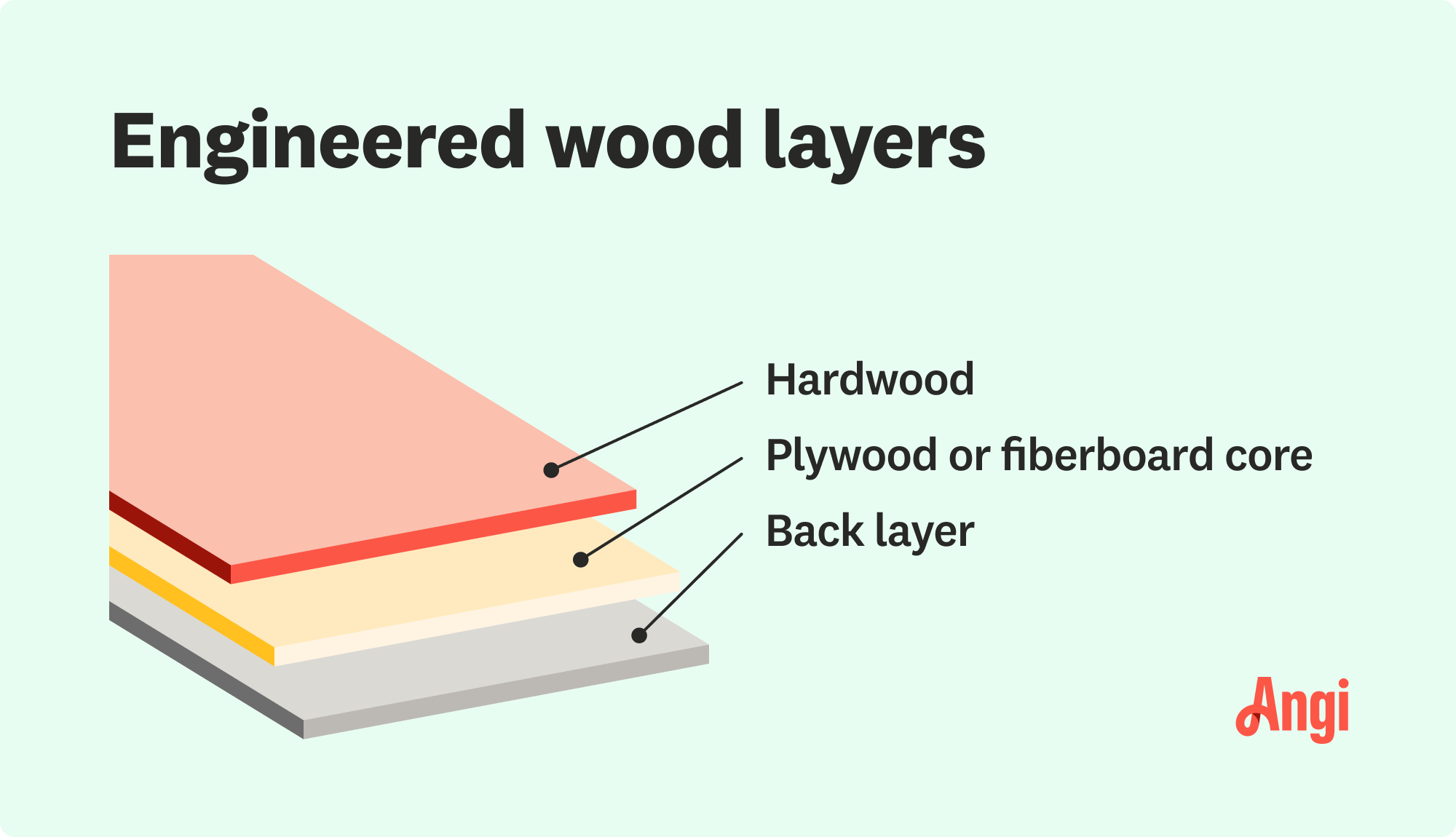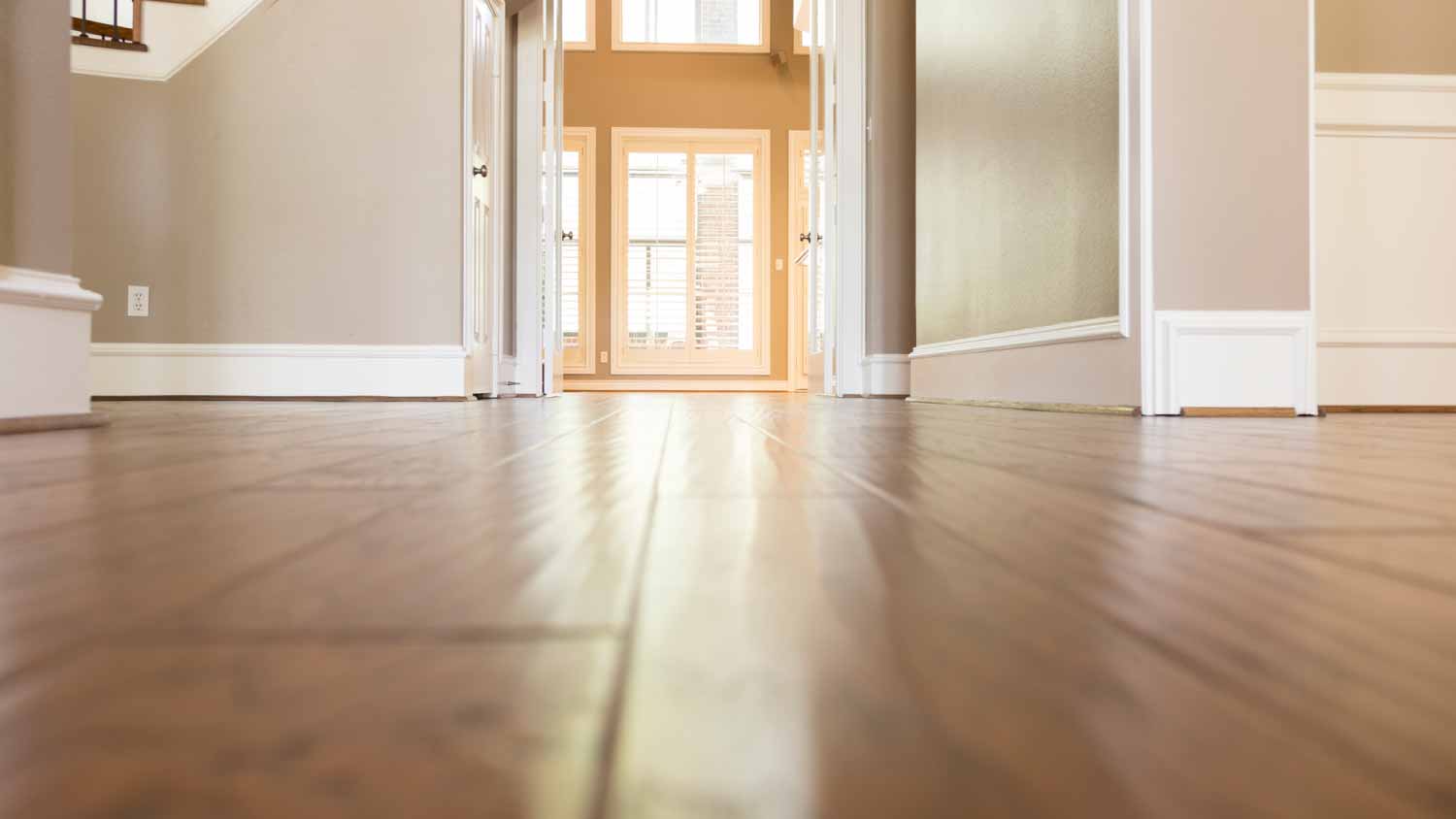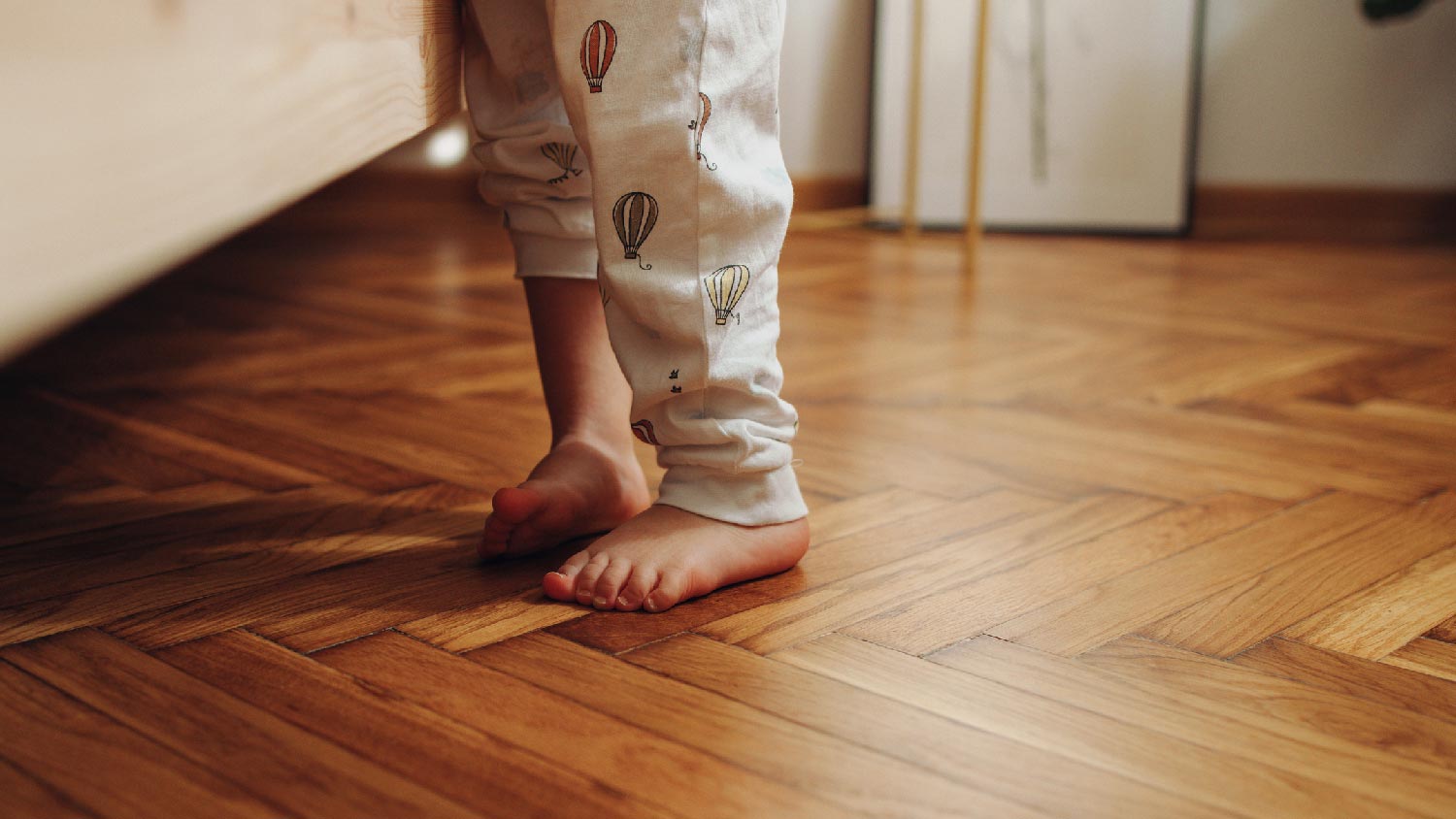What Is Engineered Wood, Anyway? Here’s What to Know
Engineered wood is a durable, long-lasting, and affordable option for DIYers


Engineered wood features the look of solid hardwood, with some perks: it has better moisture resistance and a cheaper cost. In the home, engineered wood can be used for a number of projects, including floors and furnishings. Whether you plan to DIY or hire a professional, here’s what you should know about engineered wood.
How to Use Engineered Wood in Your Home
Engineered wood is becoming more prevalent in homes today thanks to its durability and affordability. This type of wood is made up of several layers.

The top and bottom layers are typically made of solid hardwood, which is why engineered wood is nearly indistinguishable in appearance. The core is where things differ: it’s made up of multiple layers of plywood, with the grain of each layer running in opposite directions. This layout makes the wood planks more stable.
There are so many ways to use engineered wood in your home. Maybe you dream about gorgeous wood flooring across your foyer or beautiful (and sturdy!) wood furniture on the patio. Engineered wood is also excellent for bookshelves and even modular kitchen cabinetry. But if you’re looking to use engineered wood for your deck, you might have better luck with solid wood such as cedar or a composite, which can include wood blended with plastic for lower maintenance.
Engineered Wood vs. Other Options

Engineered wood, solid wood, and laminate can all look similar in appearance. But the quality, durability, maintenance needs, and cost vary from one another.
Engineered Wood
Engineered wood is made up of layers of solid wood and plywood. It’s more moisture-resistant than solid wood and needs slightly less maintenance. It requires more maintenance than laminate but is also more durable. Costs are similar, but often slightly less than solid hardwood.
Solid Wood
Solid wood is just that—planks of real hardwood. Of these three types of flooring, solid wood is the least resistant to moisture. It will not do well in humidity, and wet mopping is a huge no-no. It is a long-lasting flooring option that is pretty durable, but it can be difficult for DIYers to install.
Laminate
Laminate, like engineered wood, is made up of layers. But these layers include a moisture barrier at the base, high-density fiberboard, an image layer consisting of a high-resolution photograph that looks like wood, and a clear, protective coating. Laminate is not as durable or long-lasting as solid wood or engineered wood, but it is easy to install without hiring a pro and is an affordable option.
Building With Engineered Wood
Because there are multiple applications for engineered wood, there are also a number of ways to build with or install it.
Installing Floors
Engineered wood flooring is a popular choice for use over concrete subfloors, which solid hardwood can’t be installed over.
As far as installation goes, engineered floors can be applied by nails, glue, or the float method. Floating means the flooring is not bonded via nails or adhesive to the subfloor; instead, it “floats” above it and joins together via milled edges that click together. This method is very easy for DIYers, but it can leave a hollow floor sound and feel less durable.
Building Furniture
When it comes to furniture or custom woodworking, engineered wood is a good pick because it’s durable. The wood’s moisture resistance means it can also be used to make outdoor furniture. The biggest issue, though, is that because it is made of layers of various materials and glues, it can be difficult to cut or drill it with hand and power tools. Excessive use of tools on these engineered wood materials can also wear down your tools over time.
Cost of Engineered Wood
The price per square foot of engineered hardwood can vary widely. Products with fewer core layers and lower-quality materials will cost less, while engineered wood made with high-quality materials will be close in price to solid hardwood. Costs typically range from $3 to $15 per square foot.
Engineered Wood Maintenance
Engineered wood floors are not high-maintenance, but it’s no secret they aren’t likely to last as long as their solid wood counterparts. That’s because solid wood can be sanded and refinished a number of times to keep it looking fresh, but the thin, top layer of solid wood in engineered wood planks is only able to be refinished once or twice over the span of its lifetime.
Solid wood can last 30 to 100 years, while engineered wood is expected to last 20 to 40 years.
Both can be cleaned carefully with sweeping and occasional dry-mopping, but ensure the cleaner you choose to mop with is suitable for your type of flooring.
Should You Choose Engineered Wood?
Depending on your budget, project, and lifestyle, engineered wood could be a good option. It’s more affordable than solid hardwood and fairly long-lasting. If you’re building furniture, consider working with a professional or opting for hardwood, as engineered wood can be hard on your tools (although the resulting furniture will be durable and moisture-resistant). As far as flooring goes, engineered wood offers a high-quality look for less, but it might require more upkeep than laminate.
Is Engineered Wood Real Wood?
In short, yes. Think of engineered wood like a sandwich: the top and bottom layers are solid wood, but inside is a core of layered plywood. So while this type of wood is tinkered with a bit (engineered, if you will) it’s made from real wood.
Is Engineered Wood High Quality?
Like many materials, you can purchase engineered wood that varies in quality. Some types of engineered wood are best for behind-the-scenes action, like subfloors. Other, higher-end options can be great material for kitchen cabinets or living room floors.














